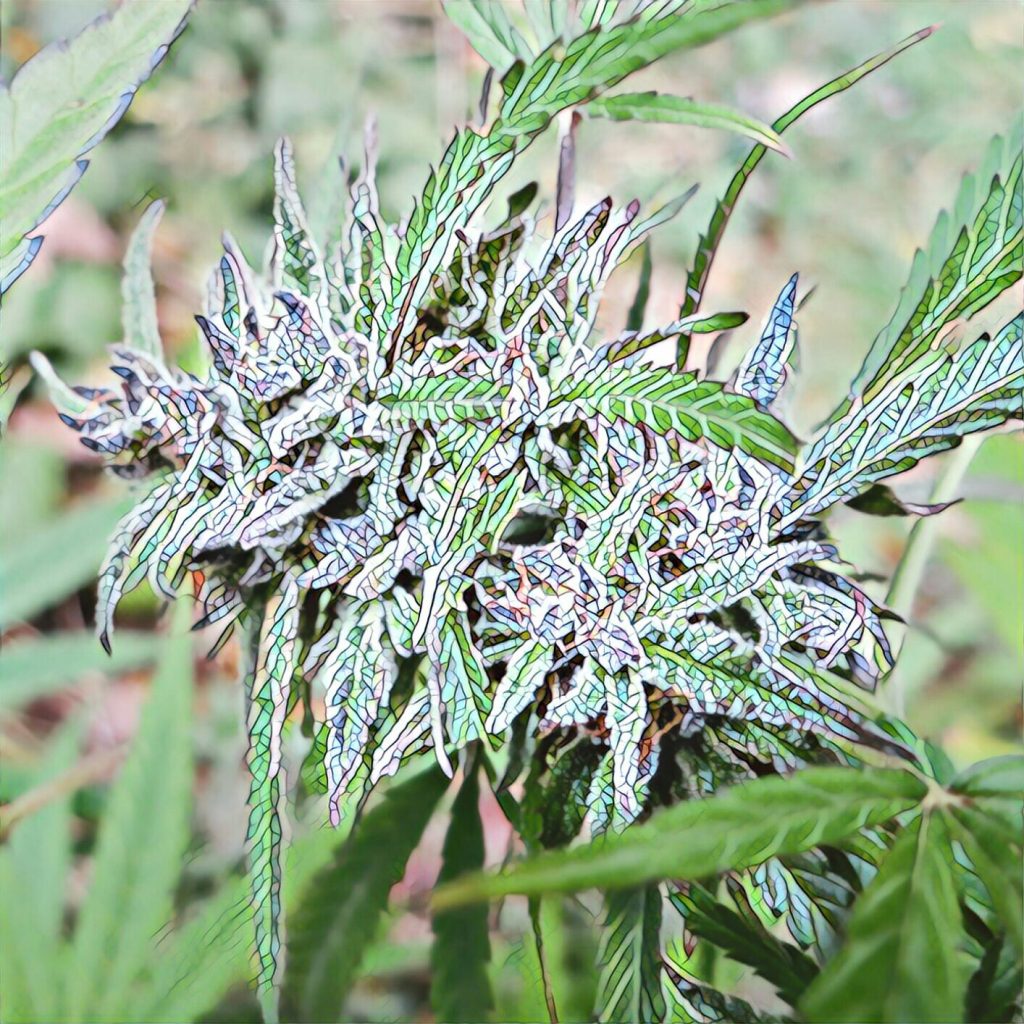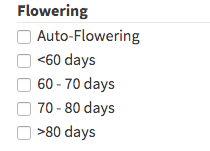
When looking for genetics on Strainly, you might have noticed the filter “Flowering”. In addition of the flowering time ranges, a there’s an option called “Auto-Flowering”… What does that mean? How do Auto-Flowering strains differ from others? This is what we’ll cover in the below article…
Hemp plants usually start blooming (or flowering) when light exposure decreases. Days start getting shorter in Summer and hemp plants get into reproduction mode before Winter hits. Flowering is based on photo-period for the majority of hemp varietals. Depending on whether their ancestors came from long or short Summer regions (as well as on cultivation condition) their flowering time would vary from 50 to over a 100 days in some cases.
But there’s another kind: auto-flowering varietals. These plants do not start flowering based on the amount (duration) of light exposure, but will enter the blooming phase regardless, after 2 to 4 weeks of vegetative state.

It proved to be rather convenient for our members to be able to search genetics by flowering time. Providing this search ability without a reminder of what auto-flowering strains consist in, would have been a bit unfair…
How come?
How do auto-flower plants bloom despite the abundance of daylight?
Ruderalis genetics
Ruderalis varietals are endemic to borealis and generally colder regions, where summers are short and winters early. Ruderalis varietals have adapted to their harsh environment by giving up their reliance on daylight shortening in order to trigger reproduction season (what Sativas and Indicas do). They instead started to reproduce after a short amount of time into vegetative state, thus ensuring the survival of the species (through seed production) before winter kills them all. Ruderalis genetics originate from Central Europe/Eurasia.
Human intervention
Ruderalis are often considered as inferior to Sativas and Indicas due to their shorter and less lush phenotypes as well as their “poor” chemotypes. Because Ruderalis plants had much less time to grow and flower than their Sativas and Indicas siblings from Tropical and Equatorial regions, they also had less time to expand their buds or produce terpenes and cannabinoids.
When breeders realized that Ruderalis plants were not photoperiod varietals (i.e. they didn’t depend on light deprivation to bloom), they indeed started experimenting by crossing Sativa, Indica or Hybrid varietals with Ruderalis ones, and came up with plants combining both the attractive phenotypes and chemotypes from the former and the prompt flowering kick-off from the latter. Auto-flowering strains then became available to growers.
Should I grow auto-flower seeds?
You may be wondering “are these perfect strains combining the best of both worlds? or is it too good to be true?”.
Pros
Auto-flowering strains will start producing buds after 2 to 4 weeks even if they get more than 12 hours of light daily. This means you can harvest in spring or summer without any light deprivation.
Auto-flowering plants will usually arrive at maturity earlier, no later than 3 months after propagating. This means you can start new grow cycles more frequently. This also means that they are a safer bet if growing outdoor in northern and colder regions. They will allow you to harvest before the first frost of mid-autumn.
Because they can receive more light than photoperiod varietals, the buds will tend to grow faster and relatively bigger within this shorter period of time.
“Autos” are usually shorter and bushier and therefore well adapted to indoor growing environment or where generally, where space is limited.
Cons
Auto-flowering strains usually feature shorter phenotypes, which will limit the yield in comparison to most photoperiod varietals.
Due to the shorter vegetative state, you can’t really train your plant. For instance, Growers who do SCROG (Screen of Green) will generally stay away from “Auto-strains”. However, autoflowerting strains can be used in SOG (Sea of Green) setups.
Because of their short vegetative state, cloning is more complicated. The mother-plant will always produce buds periodically.
How do I grow auto-flowering plants?
Your entire cycle will be shorter. There will be fewer things to do but, they need to be done right.
If growing indoor, you can stick to 18 hours light / 6 hours dark throughout the entire cycle. Some growers will go up to 20 hours of light per day.
You need to put the seeds or seedlings directly in the pot or tray you’ll use until harvest. Avoid transplanting your plants.
You can top your plants on the fourth node to foster branch development early. You may also decide to pull the main stem on the side to give more light to those lower branches.
If growing outdoor in colder regions, you still need to pay attention to temperatures! Growing in a greenhouse may be a safer bet if sudden temperature drops are frequent during Spring or late Summer/Autumn in your region.
Consider harvesting buds gradually, starting with top colas and finishing with lower buds, which will certainly take more time to mature.
Conclusion
In conclusion, auto-flowering strains are increasingly popular due to the convenience they offer. For beginners, they leave fewer parameters to control to the grower while producing decent harvests.
Some breeders specialized in auto-flowering strains and the general quality of these genetics improved over the years.
In colder regions, like Canada, outdoor growers will seriously consider auto-flowering strains for more resilience to early temperature drops in late September/early October.
While auto-flowering varietals are still despised by many, there may be an opportunity for talented breeders to develop some stable auto-flowering plants with interesting terpenes and cannabinoids profiles. Such plants adapted to the Canadian terroir could eventually allow outdoor and greenhouse craft cultivators to produce high quality hemp despite harsher weather conditions.
